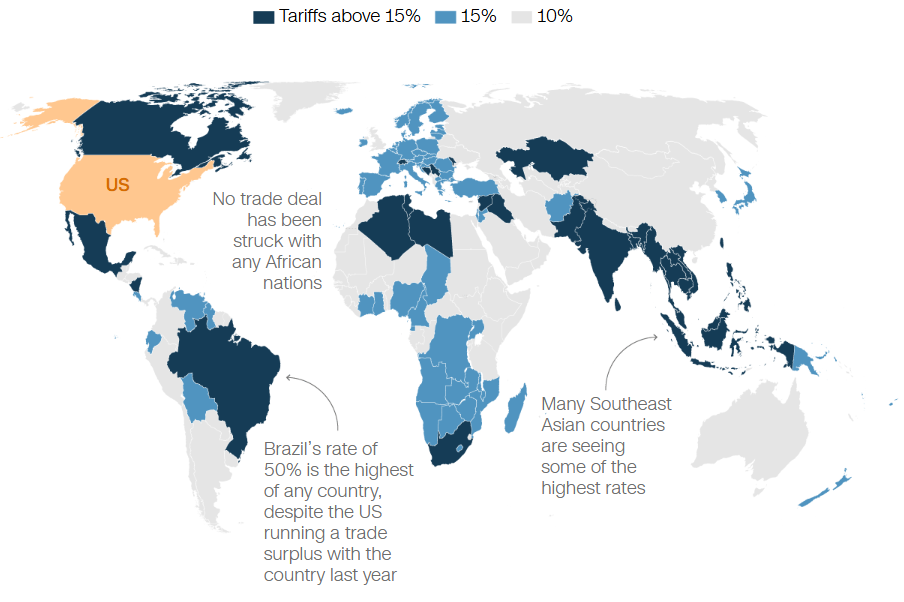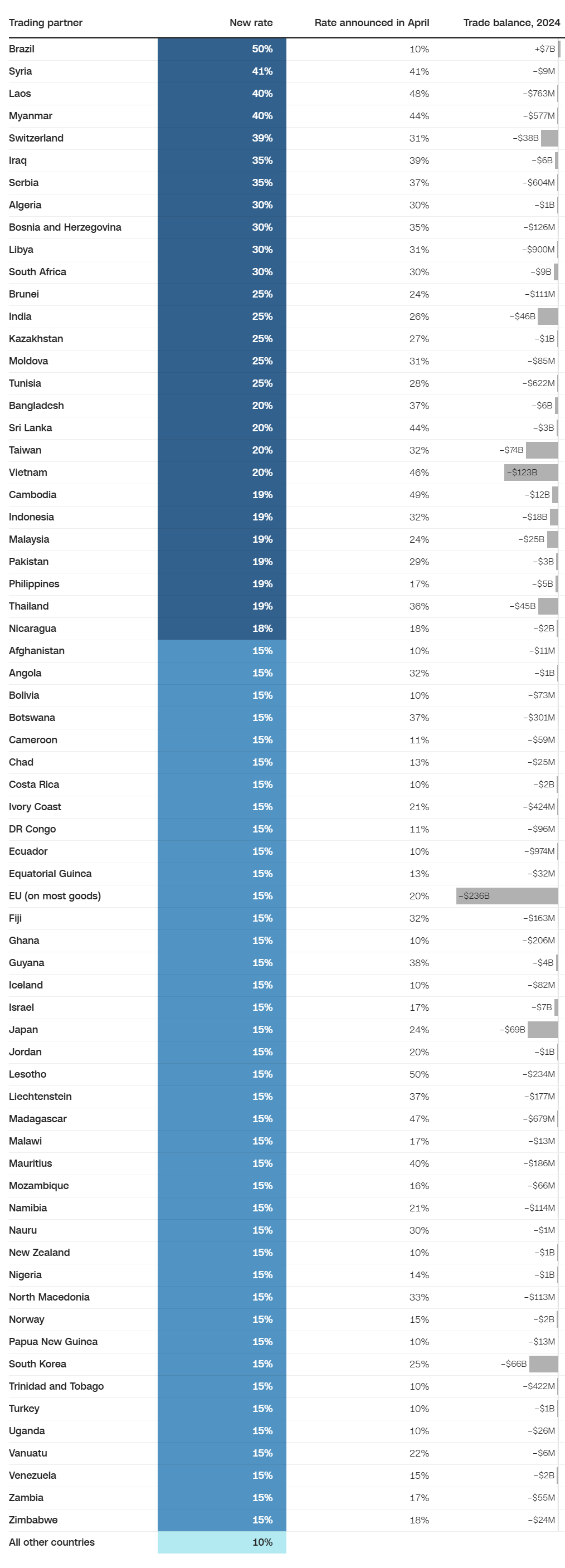
BIX ARTICLE
These are the countries affected by Trump’s latest tariffs
Aug 04, 2025
|
3 min read
Featured Posts
Social Bonds Illustrative Use-Of-Proceeds Case Studies Coronavirus
Jul 06, 2020
|
2 min read
Sustainable Banking Network (SBN) Creating Green Bond Markets
Jul 06, 2020
|
2 min read
Why is Inflation Making a Big Comeback After Being Absent for Decades in the U.S.?
Mar 24, 2022
|
7 min read
SC issues Corporate Governance Strategic Priorities 2021-2023
Mar 29, 2022
|
3 min read
Starting August 7, the United States will impose a 10% “universal” levy on imported goods from countries with which it has a trade surplus and a 15% tariff on goods from about 40 nations with which it has a trade deficit. Some countries, like Brazil, face levies ranging up to 50%.
Trump’s tariff regime is unprecedented for modern times. The new duties imposed on America’s trading partners are the highest since 1933, a time when steep tariffs contributed to the worsening of the Great Depression.
Here’s how US trading partners will be affected:
Global trading partners affected by President Donald Trump's new tariffs
So far, the European Union, UK, Japan, South Korea, Philippines, Indonesia, Vietnam, Cambodia, Pakistan and Thailand have trade deals with the United States.

Note: Canadian and Mexican goods that are not exempted by the USMCA free-trade agreement face a tariff of 35% for Canada and 25% for Mexico. Most Chinese goods face a 30% tariff with some exemptions.
Source: White House
Graphic: Annette Choi and Rachel Wilson, CNN
How Trump's country-specific tariffs have changed since April
The 10% universal tariff stays, but about 40 countries with which the US runs a trade deficit will now face a 15% rate. Some will be hit with even steeper rates. Brazil faces a 50% total tariff after an additional 40% was imposed on Wednesday — despite the US running a trade surplus last year, exporting more to Brazil than it imported.

Note: Canadian and Mexican goods that are not exempted by the USMCA free-trade agreement face a tariff of 35% for Canada and 25% for Mexico. Most Chinese goods face a 30% tariff with some exemptions.
Sources: White House, US International Trade Commission
Table: Rachel Wilson and Rosa de Acosta, CNN
CNN’s David Goldman contributed to this report.
Article by: Rachel Wilson, Annette Choi, Anna Cooban
Source: CNN
Disclaimer
The information provided in this report is of a general nature and has been prepared for information purposes only. It is not intended to constitute research or as advice for any investor. The information in this report is not and should not be construed or considered as an offer, recommendation or solicitation for investments. Investors are advised to make their own independent evaluation of the information contained in this report, consider their own individual investment objectives, financial situation and particular needs and should seek appropriate personalised financial advice from a qualified professional to suit individual circumstances and risk profile. The information contained in this report is prepared from data believed to be correct and reliable at the time of issuance of this report. While every effort is made to ensure the information is up-to-date and correct, Bond and Sukuk Information Platform Sdn Bhd (“the Company”) does not make any guarantee, representation or warranty, express or implied, as to the adequacy, accuracy, completeness, reliability or fairness of any such information contained in this report and accordingly, neither the Company nor any of its affiliates nor its related persons shall not be liable in any manner whatsoever for any consequences (including but not limited to any direct, indirect or consequential losses, loss of profits and damages) of any reliance thereon or usage thereof.
YOU MAY ALSO LIKE
ARTICLE
Dec 18, 2025
|
7 min read
ARTICLE
Dec 16, 2025
|
5 min read
ARTICLE
Dec 15, 2025
|
3 min read
ARTICLE
Dec 12, 2025
|
5 min read


